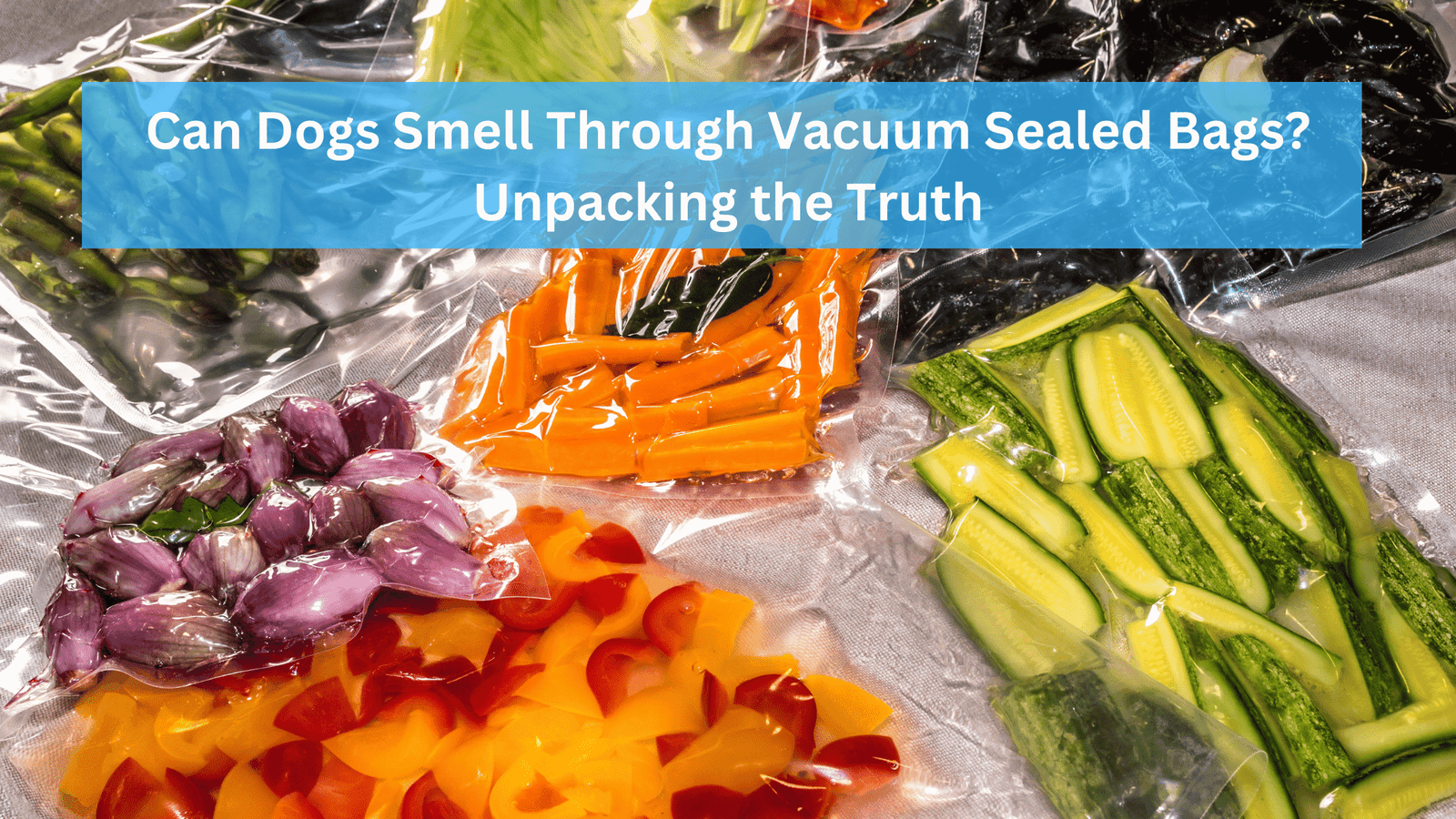Can dogs smell through vacuum sealed bags? When it comes to the incredible abilities of dogs, their sense of smell is often the most astonishing.
With up to 300 million olfactory receptors compared to the 6 million in humans, dogs can detect scents at incredibly low concentrations.
This powerful sense of smell has led to various applications, from search and rescue operations to detecting contraband. Let’s explore this fascinating topic in detail.
Understanding a Dog’s Olfactory Abilities
Dogs possess an extraordinary olfactory system. Their noses are equipped with a large surface area for scent detection, and the olfactory bulb in their brains, dedicated to processing smells, is 40 times larger than that of humans.
This allows dogs to detect even the faintest of odors, which makes them valuable in various roles, including law enforcement and medical detection.
The Science Behind Vacuum Sealed Bags
Vacuum-sealed bags are designed to keep air and moisture out, thereby preserving the contents inside.
These bags remove the air from within and create a tight seal that is intended to protect items from spoilage, contamination, and odor leakage.
The materials used are typically thick and impermeable, but do they stand up to a dog’s keen sense of smell?
Can dogs smell through Vacuum Sealed Bags?
Despite the advanced design of vacuum-sealed bags, they are not entirely foolproof against a dog’s sense of smell. Here’s why:
1. Molecular Leakage: While vacuum-sealed bags significantly reduce the escape of odors, they are not perfect. Small amounts of scent molecules can still permeate through the material or the seals over time. Dogs can detect these minuscule amounts of scent that escape.
2. Cross-Contamination: When handling substances before vacuum sealing, trace amounts can remain on the outside of the bag. These residual scents can be detected by dogs, leading them to alert to the presence of an odor even if it’s not directly coming through the sealed bag.
3. Persistence of Odor: Certain substances have particularly potent odors that can linger and be detected despite multiple layers of barriers. For instance, narcotics and explosives have strong scents that dogs are specifically trained to identify.
Also Read : Can Dogs smell through mylar bags?
Real-World Applications and Limitations
In practical scenarios, such as airport security and law enforcement, dogs are often employed to detect contraband, including drugs and explosives.
While vacuum-sealed bags can make detection more challenging, trained detection dogs have shown remarkable success in identifying hidden items.
It’s important to note, however, that no method is entirely foolproof, and there are instances where sophisticated sealing techniques might temporarily evade detection.
Best Practices for Using Vacuum-Sealed Bags
While vacuum-sealed bags offer a high level of protection and odor containment, they should not be solely relied upon for complete scent elimination. Here are some best practices:
– Minimize Handling: Avoid excessive handling of the items to be sealed to reduce the risk of cross-contamination.
– Multiple Layers: Consider using multiple layers of sealing materials for added protection.
– Storage Environment: Store vacuum-sealed bags in environments where the presence of strong odors is minimized to prevent external contamination.
Also Read: How to Teach Your Dog to Roll Over: Best Guide
Also Read : Can Dogs Eat Green Apple? A Comprehensive Guide
Conclusion
Dogs possess an extraordinary sense of smell that can penetrate even the most sophisticated odor barriers, including vacuum-sealed bags.
While these bags are effective in reducing odor escape, they are not entirely scent-proof against a dog’s powerful olfactory system.
Understanding the limitations and best practices can help maximize the effectiveness of vacuum-sealed bags, but it’s crucial to recognize that trained detection dogs can often detect what might seem undetectable to humans.
For more insights into the incredible abilities of dogs and the science behind their senses, stay tuned to our blog.
Whether you’re a dog owner, a professional handler, or simply a canine enthusiast, the world of a dog’s nose is truly fascinating and worth exploring.







